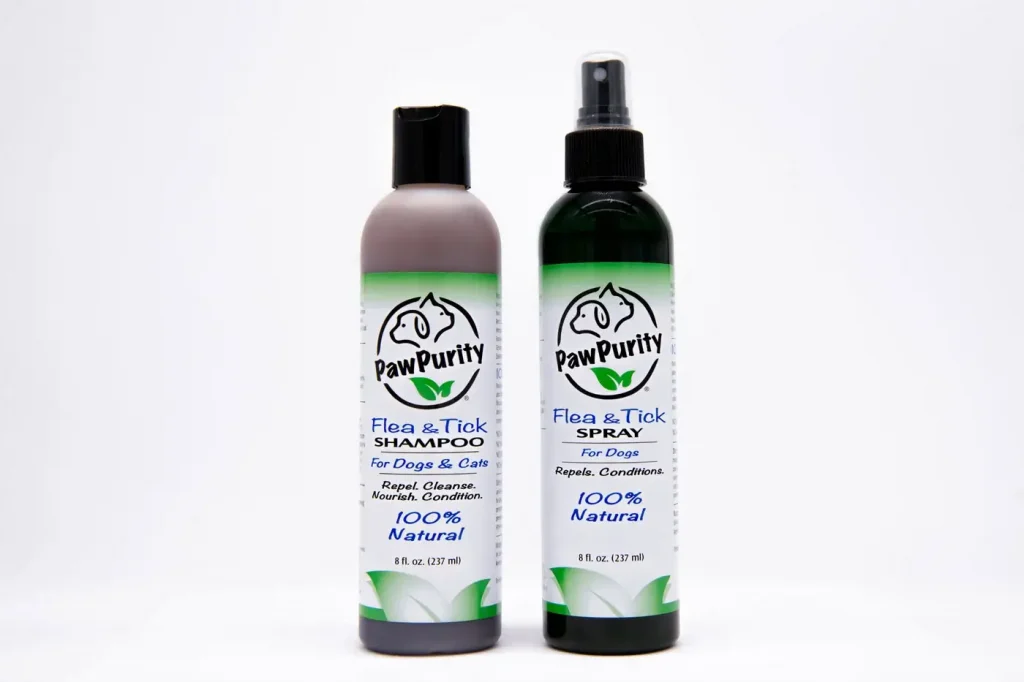Spring is approaching, and with it comes the dreaded flea and tick season. This time of year can be a nightmare for pet owners, as these pests can cause immense discomfort and even health problems. While fleas are the most common pest during the spring, ticks also pose an even worse danger to your pet’s safety and well-being; it is important to be aware of the signs and symptoms of fleas and ticks and have a solid plan to protect your pet from these pests before an infestation.
When is Flea and Tick Season?
The answer to this question is not as simple as it may seem. While spring is often thought of as the beginning of flea and tick season, ticks, in particular, can be present year-round in many areas. Depending on the climate, fleas may be most active in the spring and summer, while ticks typically begin to lay eggs on dogs in late summer or early fall.

Typically, the flea season starts to come into full swing during warmer temperatures and higher humidity. As these conditions increase, so does the presence of fleas, which are attracted to warm, damp areas. This usually means that your pet’s risk of infestation will increase from April through September.
On the other hand, ticks are typically more active from late summer to early fall. During this time, adult ticks lay eggs on their hosts, which then hatch into larvae and begin searching for a new host. Again, depending on the climate, this cycle typically will continue into late fall and even winter.
It’s important to remember that while flea and tick season is largely dependent on the climate, fleas, and ticks can be present year-round. That’s why taking preventive measures throughout the year is important to keep your pet safe.
How Can I Tell If My Pet Has Fleas or Ticks?
If you think your pet might have fleas or ticks, there are several tell-tell signs. Fleas are small, dark brown insects that feed on the blood of animals. You may see them or their droppings on your pet’s fur. Ticks lay their eggs on your dog’s coat, which you can often find in areas around the ears, neck, and legs.
If your pet is constantly scratching or licking themselves, they likely have fleas or ticks. If your pet shows any of these signs, it is important to act as soon as possible to protect them from further harm.
Do a throughout search of your pet’s skin. Using a flea comb helps, but ticks that have attached themselves to your pet are a bit harder to spot.
Some Ways to Prevent Fleas and Ticks
Most important, it’s critical to take a proactive approach to prevent fleas and ticks from attaching to your pet. The best way to do this is through safe flea and tick-repelling shampoos and sprays. There are many spot-on products and collars, however, some have been found to be potentially dangerous, according to the FDA. Keep in mind that the most effective way to control fleas and ticks is to keep them from ever getting on your pet in the first place.
1. Grooming and vacuuming
Regular grooming and vacuuming of your home and yard can also help reduce the number of fleas and ticks. Regularly check your pet for fleas and ticks, paying close attention to areas around the ears, neck, and tail. If you find fleas or ticks on your pet, bathe your pet in a repelling shampoo and remove ticks with tweezers. Dispose of them properly.
2. A non-toxic flea and tick shampoo
We recommend using PawPurity Flea & Tick Shampoo for excellent results. This product is specifically formulated to repel adult fleas, ticks, and their eggs on dogs and cats. It’s best to use it before fleas and ticks present themselves. It is made with an olive-oil base, natural plant extracts, and essential oils, making it safe for your pet’s skin. Using regularly throughout the year will help keep your pet free of pests.
3. Insect repellant treatments
Several insect repellent treatments available over the counter or through your vet provide excellent protection against fleas and ticks during the summer months. However, these treatments must be applied regularly according to schedule to remain effective against flea eggs and larvae.
PawPurity’s natural and organic flea and tick repellent spray is another option that protects your pet against pesky parasites. The natural ingredients act as an insect repellent that disrupts and prevents the development of ticks eggs on dogs and cats. PawPurity’s formula works without harsh chemicals, which often are unsafe for animals or their environment. Use the product throughout the year, especially when the temperature rises above 80 degrees Fahrenheit when flea season is at its peak.
FAQs
What Time of Year are Fleas Most Active?
Spring is a prime season for fleas as they thrive in warm temperatures. During this time of year, fleas will lay their eggs on dogs which can quickly lead to an infestation. To prevent fleas from becoming a problem, it is important to start preventive measures pre-season and continue through late fall when the temperatures drop. If your area is laden with ticks, year-round use is suggested.
When Does Flea Season End?
While it’s hard to predict exactly when the flea season will end, it usually slows down as temperatures drop and fall approaches. By late October, fleas and ticks should no longer be a major concern for pet owners. However, it’s still important to remain vigilant and check your pet for any signs of these pests until the weather gets too cold for them to survive.

PawPurity Flea and Tick Prevention
In conclusion, spring can be a difficult time for pet owners. Not only do fleas emerge from their winter dormancy, but they can cause a lot of stress for your furry friends. Preventive measures are the best way to protect your pets from these pesky pests. Start by brushing and bathing them regularly, and use flea-repellent products to keep them safe throughout the season. Finally, if you find any signs of a major infestation, contact your veterinarian immediately.
Stay safe and keep your pets safe!
#FleaSeason #Spring #FleaAndTick #TickSeason #Fleas











